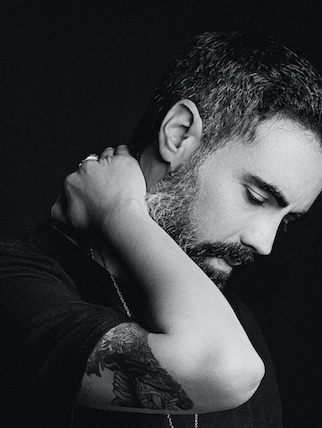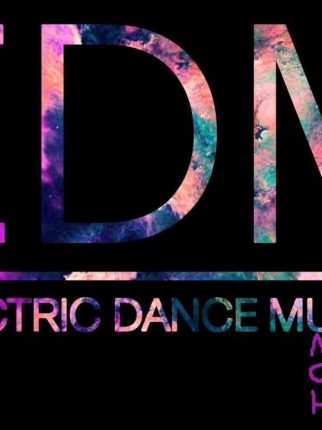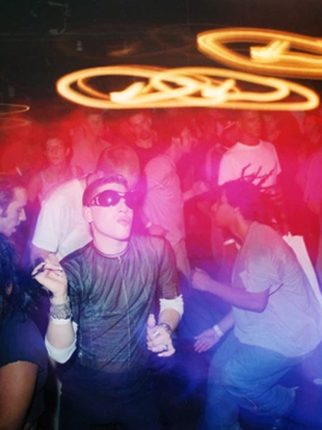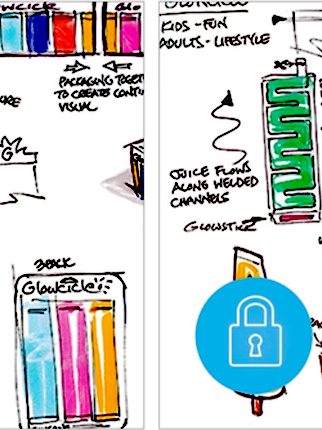Whitestone Is Turning Album Artwork Into an Immersive Social Networking Experience

At a time when visuals are paramount, the entity that has lost out is album artwork. One of the best parts of owning vinyl is the large format of the cover and the amount of space on the inside for more art and scads of information. These days, the album cover is reduced to an eye-squinting thumbnail, the most insignificant part of the music listening experience.
“As an artist creates their album… there is a new option, a new possibility, to also create an interactive experience.”
Enter Israeli musician and visual artist Roey Tsemah. After working as a touring musician for a number of years, most notably as part of a circus band, Tsemah came to the Hague, Netherlands to go to university to study graphic design at the Royal Academy of Arts. During his time there, most of Tsemah’s endeavors were music-related. As part of his graduate project, he formed music group Letters From Abroad as a research tool, documenting the process of writing music step-by-step. A look at Letters From Abroad’s SoundCloud reveals numerous songs, many of them the same one, during various times in their creation. For example, the track “Don’t Tell Your Mother” is posted 13 times through its evolution, starting on an iPhone and ending in an alternate version on Ableton.
His research about the way we experience music is an extension of this idea. After two and a half years of refining his ideas, Tsemah presents Whitestone, a platform that draws on his passions of art, design, technology, and the independent music industry. Originally called Bckstge, the platform is now, more aptly, named after Alex Steinweiss, whose name translates to “Whitestone.” Steinweiss is the visionary who invented album artwork in 1938. Prior to Steinweiss’ invention, albums came in brown wrappers. His idea changed the face of music. Propelled by the same drive, Tsemah’s Whitestone brings back album artwork and takes it to the next level.
Whitestone provides a social networking platform for the album artwork to not just appear full-screen, but for the user to interact with the artwork, all the while enjoying the artist’s music. To quote Tsemah’s video, “Streaming services are essentially all the same: They’re focused on passive listening… They encourage us to press play and go do something else.” Whitestone is about an immersive experience that brings back the human need for collecting; this time, it’s dynamic artwork attached to an artist album. Tsemah explains, “I’ve been struggling to build Whitestone to get to the point where it’s something that you can understand with four minutes of video. For years, it was like pushing the truck on the side of the road while people all around were honking at me saying, ‘What the fuck are you doing, man?’”
Tsemah takes us through what the fuck he was doing in the creation and execution of Whitestone.
What is Whitestone?
The idea came from how making music evolves based on the medium that is used at the time. When MTV was launched in 1981, they didn’t invent the video clip. What they did was really simple: Let’s have a platform where all these people that make music can make use of the new medium and get exposed to people that are interested.
For example, Brian Eno created an app to experience music. He said, I’m a composer, I’m making music, but I also understand the future is not about me making my composition, but about making an experience that people can interact with. Arcade Fire did something cool in 2009 with “The Wilderness Downtown” where they had this Chrome experience that you could put your location in, and it would work with Google Maps. Björk did it [Biophilia app]. Radiohead did it [PolyFauna app]. Pharrell Williams did it [“Happy”].
“The audience I’m looking for is people that have had enough of instant culture.”

People are making these things, but they’re like islands in different locations around the globe—an app here, a website there, some teasers, and that’s it. You get exposed to them, you watch, maybe tweet about it, move on, and do something else. It’s a promotional thing. I see these things as special editions of the album. I want to collect the stuff.
As an artist creates their album, their designer makes the artwork, they can keep in mind there is a new option, a new possibility, to also create an interactive experience. And artists reissue previous albums with new interactive artwork, like a special edition of a CD used to be.
Whitestone is for people that make things related to experiences that are more artistic and not so instant. People spend a lot of time on Netflix on beautiful series that are really artistic. Breaking Bad, for example—a lot of the scenes there are really artistic. They take their time and make the story the way they want, and they were really successful. It doesn’t have to be so instant for people to get it. Sometimes you need a little more time. The audience I’m looking for is people that have had enough of instant culture.
How does Whitestone work?
You can make a conceptual album and make a whole journey that takes 40 minutes. Or a lot of people are making EPs that are shorter. I would imagine people making 25 minutes of interactive experience, regardless of tracks. The art would depend on the artist. They can make something that you really have to engage with—otherwise, it doesn’t work. Or they can make an acoustic singer/songwriter album with really beautiful visuals that maybe if you move your mouse a little bit, it will change, but it’s going to be quite subtle.
As a fan, if you love an album and you want to write about it, you can post your writing on Whitestone, and it will be published to all your followers’ feeds. If you make a mix or a podcast, you can share it with your followers on Whitestone.
Who makes money?
If you see a cool artist playing on the street and you have cash in your pocket, you would throw it at them. It’s the same concept online. You decide how much money you want to deposit in your Whitestone account. Any time you go through the platform and see something cool, you can back the person you like by clicking the “+” and giving them a 10-cent coin. The more you like it, the more you put in. If I like an article you wrote, or you give me a good podcast every week, I can also give you a tip. You don’t have to be a musician; everybody’s making stuff today. You spend time on it, and you want to make good content because it’s important for you—then people follow you. The more people are following you, the higher you are ranked as a specialist. You get a badge, a stone, with the Whitestone being the highest grade of a music fan.
“Whitestone has found a gap in the matrix and is creating something good for the online music world. I think it’s a game-changer.”
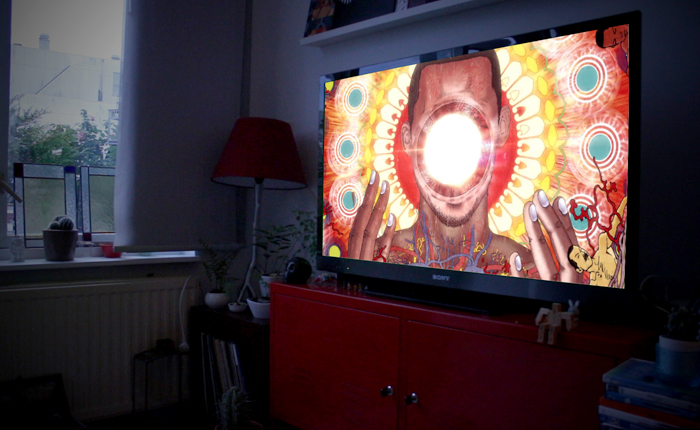
The problem at the moment is that people don’t really make interactive experiences. Just like Steinweiss created the first album artwork—Columbia Records, when he pitched the idea, said, “That’s going to be really expensive to make”; he pushed it a little bit, and they agreed. In order to make it easier for artists to do that, we’re going to create these worldwide events for two days, where those people come together, make the connection, and start building something together. When it works out, they can move on to working together on something more serious.
The first one is going to be happening on August 29 and 30 at Fabrique in Delft, the Netherlands. It should work because the designers, animators and programmers really like working on this stuff—real geeks that really love music.
I have a Google Form for people to fill in who are interested in getting involved with Hackastones. It’s going to be open, so you can see who around you is making stuff that you can reach out to.
Shawn Lee, who is one of the participants in the first Hackastone with his AM & Shawn Lee album, Celestial Electric—with artwork created by Andy Votel—says, “Whitestone has found a gap in the matrix and is creating something good for the online music world. Whitestone is bringing back the artwork aspect that has been lost but ‘in the box.’ It’s important for the artists to be involved in the creative process. I am very interested to see how Whitestone evolves. I think it’s a game-changer.”
Why do you need a Kickstarter?
Because I really think Whitestone is the future, I don’t want to blow it up and I don’t want to fuck it up. If I go with venture capital—we did have a few offers—all the idealism that is holding this thing together and makes it so exciting for everybody is going to be gone in a year or two, because they’re going to want to make their money back right away. We want to fund the platform through Kickstarter and at least get it to the point where we can start making money; then we don’t need investment from the outside world at all. The goal here is to make the first music platform that is funded on Kickstarter, so it’s funded by the community that’s going to use it. That makes it an independent platform and, hopefully, nonprofit.
Get involved ahead of time by joining Whitestone’s Thunderclap campaign.

